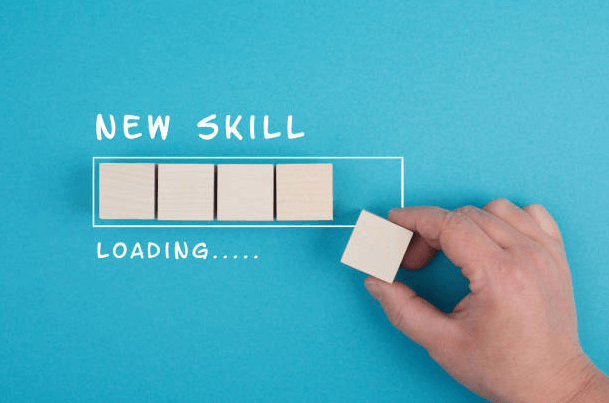How to Learn a New Skill in 30 Days – and Actually Stick With It
- gustavowoltmann198
- Jul 3
- 7 min read
Learning something new doesn’t have to take forever. With a clear plan and the right mindset, you can pick up a new skill in just 30 days—and actually make it part of your life. Here's how to do it in a way that’s realistic and sustainable. So, how to learn a new skill in 30 days?

Pick One Skill Only
Trying to learn too many things at once is a quick way to fail. When you divide your attention, none of the skills get the focus they need. So for 30 days, pick just one. One skill. One goal. Give it your full attention.
Choosing one skill helps your brain stay clear and avoids overload. If you want to learn to code, don’t also try to learn guitar or start a fitness plan at the same time. Everything else can wait. The point of this method is depth, not breadth.
It’s also important to choose something you actually care about. Don’t pick a skill just because it’s trending or someone else is doing it. If you’re not interested, you won’t stick with it. Choose a skill that excites you, something you’ve been curious about or always wanted to try.
Once you’ve chosen your skill, commit to it. Put it in writing. Say it out loud. Build your schedule around it. This clarity is what keeps you on track when motivation drops. It’s easier to stay consistent when you know exactly what you’re trying to do—and why you’re doing it.
Define a Clear Goal
If you don't know where you're going, it's hard to get there. That’s why setting a clear, simple goal is so important. You need something specific to aim for—not a vague idea.
Saying “I want to learn photography” is too broad. Instead, try “I want to shoot and edit 10 portrait photos by the end of the month.” This kind of goal is easier to track, and you’ll know exactly when you’ve done it.
A good goal should be:
Specific – What exactly do you want to achieve?
Measurable – Can you track your progress?
Realistic – Can it be done in 30 days?
Clear goals keep you focused and make it easier to plan daily tasks. They also help you stay motivated. When you know what success looks like, you’re more likely to keep going—especially when things get hard.
Write your goal down. Put it where you’ll see it every day. This keeps it top of mind and makes it harder to ignore. The clearer your goal is, the less likely you’ll waste time and the more likely you’ll stick with your new skill until the end.
Break It Into Small Daily Tasks
Trying to learn everything at once is overwhelming. That’s why breaking your goal into small daily tasks makes a big difference. You don’t need to make huge progress every day—just consistent, steady steps.
Start by asking: “What’s the smallest thing I can do today that moves me forward?”If you’re learning to code, your first few days might look like:
Day 1: Set up your coding environment
Day 2: Learn basic syntax
Day 3: Write your first simple program
These small wins build momentum. Each day’s task should feel manageable—something you can do in 30 to 60 minutes. If you try to do too much, you’ll get frustrated and quit. But if you keep it small and focused, it’s easier to stay on track.
Plan your tasks ahead of time, even if it’s just the night before. This saves time and energy. You won’t waste time each day deciding what to work on. You just do the next task.
Think of each day as one piece of the puzzle. By the end of 30 days, those pieces add up to something real. That’s how progress works: slow, steady, and built on daily effort.

Create a Schedule and Stick to It
Learning a new skill takes time—and that time won’t appear on its own. You have to make space for it. The best way to do that is by creating a schedule and sticking to it.
Pick a time of day when you’re most alert and least likely to be interrupted. Morning before work? Lunch break? Evenings after dinner? Block that time out. Treat it like an appointment. Put it on your calendar. No rescheduling unless absolutely necessary.
Consistency is more important than intensity. It’s better to practice 30 minutes every day than to do three hours once a week. Regular practice builds habits. When you show up at the same time every day, your brain gets used to it. It becomes part of your routine.
Also, prepare your environment. If you’re going to draw, set up your sketchbook and pencils in advance. If you’re learning a language, keep your app or notebook ready. The fewer obstacles, the easier it is to start.
Life happens, so you might miss a day. That’s okay—just don’t miss two in a row. The key is showing up again. A clear, consistent schedule keeps you on track when motivation fades. And over time, that routine turns into progress.
Track Your Progress
When you track your progress, you see how far you’ve come—and that keeps you going. It also helps you stay honest about the effort you're putting in.
Tracking doesn’t need to be complicated. You can use a notebook, a calendar, a habit-tracking app, or even a sticky note. Just write down what you did each day. For example:
“Watched a 10-minute coding tutorial and practiced loops.”
“Sketched two hands from reference photos.”
“Learned 15 new Spanish words.”
This daily record creates a visible chain of effort. And once you’ve built that chain, you won’t want to break it. That’s a powerful motivator.
Looking back on your notes can also help you spot patterns—what days you were most productive, when you struggled, or what kind of practice worked best. This helps you adjust your routine if needed.
Progress often feels slow in the moment. But when you have a record, you’ll see that small steps add up. That sense of improvement builds confidence. It turns doubt into motivation.
The goal isn’t to be perfect. It’s to keep moving. Tracking your progress reminds you: you’re showing up, you’re learning, and you’re getting better—one day at a time.
Learn by Doing, Not Just Watching
Watching tutorials feels productive—but it’s not the same as doing the work. To really learn a new skill, you have to practice it yourself.
It’s easy to fall into the trap of passive learning. You watch videos, read guides, or listen to experts. But if you don’t apply what you’ve seen, it won’t stick. You might understand the idea, but you won’t be able to use it when it counts.
Instead, take action as soon as possible. After watching a video or reading an article, stop and try it yourself. Mess it up. Learn from it. That’s how your brain starts to connect the pieces.
For example:
Learning to code? Build your own small project right away.
Studying drawing? Sketch something after each lesson—even if it’s rough.
Picking up a language? Try speaking full sentences instead of just memorizing words.
Practice builds real understanding. It also gives you feedback. You’ll notice what’s working, where you’re stuck, and what needs more focus. That’s something watching alone can’t teach you.
So yes, watch and read—but keep it short. Then close the window and get your hands dirty. The real learning happens when you try.

Use Public Accountability
Telling someone about your goal makes it harder to quit. That’s the power of public accountability. When others know what you're doing, you feel more responsible for following through.
You don’t need to announce it to the world. Just tell a friend, coworker, or family member. Say, “I’m learning to design for 30 days. Can I check in with you once a week?” That small step adds pressure—in a good way.
If you're comfortable, post updates online. Share your progress on social media, a blog, or a forum. You don’t need an audience—just the habit of sharing. Even one or two people watching can help you stay on track.
You can also join a group or community where others are working on similar goals. Seeing their progress and struggles reminds you that you're not alone. It also gives you a place to ask questions or share wins.
The point isn’t to impress people. It’s to stay honest. When no one knows what you're trying to do, it's easy to skip a day, then two, then stop. But when someone’s expecting an update, you're more likely to show up—even when it’s hard. That can make all the difference.
Expect Frustration, but Keep Going
Every new skill feels tough at first. That’s normal. You’ll get stuck. You’ll make mistakes. You might feel like you’re not improving. That’s part of the process.
Frustration doesn’t mean you’re failing. It means you’re learning something new. Your brain is adjusting. Your hands are catching up. You’re building new habits—and that takes time.
You might compare yourself to others who seem better or faster. Don’t. They started earlier. Or they’ve had more practice. Your job isn’t to be perfect. Your job is to keep showing up.
It helps to set the right expectations from day one. Tell yourself: “This will be hard sometimes. I will mess up. That’s okay.” When you expect obstacles, they won’t surprise you. You’ll be ready to work through them instead of quitting.
When a task feels too hard, break it down more. Go slower. Focus on just one small step. If you’re burned out, take a short break—then come back. What matters is that you return and keep moving.
Progress is rarely smooth. Some days will feel great. Others will feel stuck. That’s how growth works. Frustration is not a signal to stop—it’s a sign you’re in the middle of learning. Stay with it. You’re getting there.
Final Thought
Learning a skill in 30 days is possible when you focus, stay consistent, and keep it simple. You don’t need to be perfect—you just need to keep showing up. One step a day adds up. By the end of the month, you’ll be surprised how far you’ve come.









Comments